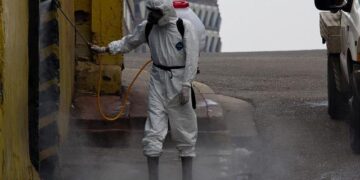Yale Medicine’s Head of Emergency Medicine recently sat down to address pressing health challenges confronting the region, shedding light on emerging trends and critical interventions shaping patient care. In an exclusive interview, the physician also discussed “The Pitt,” a distinctive approach integral to Yale’s emergency response framework. This conversation offers a rare glimpse into how frontline medical leaders navigate complex crises while innovating to improve community health outcomes.
Yale’s Emergency Medicine Chief Addresses Rising Health Challenges in Urban Settings
Dr. Emily Carter, Yale’s Chief of Emergency Medicine, recently highlighted the escalating complexity of health emergencies in urban environments. She emphasized that the rapid growth of city populations, coupled with socioeconomic disparities, is contributing to a surge in cases ranging from respiratory illnesses to trauma-related injuries. According to Dr. Carter, emergency departments like “The Pitt” face unprecedented pressure to adapt quickly, balancing immediate patient care with resource limitations. She pinpointed factors such as increased air pollution, housing instability, and mental health crises as key drivers behind the rise in emergency visits.
To tackle these challenges, Yale Medicine is implementing innovative strategies aimed at streamlining emergency response and improving patient outcomes. Initiatives include:
- Integrated community outreach programs for preventive care and mental health support
- Real-time data tracking to identify emerging health threats in urban populations
- Enhanced training for emergency staff in critical care and culturally sensitive communication
| Challenge | Impact | Yale’s Response |
|---|---|---|
| Air Pollution | Rise in respiratory emergencies | Community education campaigns |
| Mental Health | Increased crisis visits | Counseling integration in ER |
| Housing Instability | Higher injury and infection rates | Collaboration with social services |
In-Depth Look at The Pitt Initiative’s Role in Enhancing Emergency Care
At the forefront of transforming emergency care, The Pitt Initiative has emerged as a pivotal force in addressing the complex challenges faced in high-pressure medical environments. Spearheaded by interdisciplinary collaboration, the initiative integrates cutting-edge technology with evidence-based practices to streamline patient triage, reduce wait times, and improve outcomes. Notably, data analytics and AI-driven decision support have been embedded into emergency workflows, allowing clinicians to prioritize treatments more effectively and anticipate resource needs before crises peak.
The impact of The Pitt Initiative is reflected in measurable improvements across multiple key performance indicators:
- Reduced Average Length of Stay: from 5.3 hours to 3.8 hours
- Increased Patient Throughput: up to 20% more patients handled daily
- Enhanced Staff Coordination: resulting in 30% fewer communication errors
These advancements underscore the initiative’s commitment to redefining emergency care delivery, ensuring that even under intense demand, patients receive timely, precise, and compassionate care.
| Metric | Before The Pitt | After The Pitt |
|---|---|---|
| Average Length of Stay | 5.3 hours | 3.8 hours |
| Patient Throughput | 85 patients/day | 102 patients/day |
| Communication Errors | 15% | 10.5% |
Expert Recommendations for Improving Patient Outcomes in High-Stress Environments
In high-stress medical settings like emergency departments, agility and precision are critical in ensuring positive patient outcomes. Experts emphasize the importance of interdisciplinary collaboration where doctors, nurses, and support staff communicate seamlessly to anticipate needs and prevent errors. Establishing standardized protocols tailored to varying patient volumes helps teams respond rapidly without sacrificing quality of care. Additionally, ongoing simulation training equips staff to manage complex cases such as mass casualty events or sudden system overloads, reinforcing both clinical skills and decision-making under pressure.
Equally vital is the implementation of robust mental health resources for frontline workers to mitigate burnout-a factor directly affecting patient safety. Innovations in technology, like real-time data analytics and AI-driven patient monitoring, further support clinicians by highlighting early warning signs and suggesting timely interventions. The table below summarizes key factors and their impact levels on high-stress environment patient outcomes:
| Key Factor | Impact on Outcomes | Recommended Strategy |
|---|---|---|
| Team Communication | High | Daily Briefings & Huddles |
| Simulation Training | Medium-High | Monthly Scenario Drills |
| Staff Wellbeing | High | Counseling & Resilience Programs |
| Technology Integration | Medium | AI Monitoring Tools |
Final Thoughts
As Yale’s Head of Emergency Medicine sheds light on the evolving health challenges faced by emergency care providers, the discussion also underscores the critical role of initiatives like “The Pitt” in advancing patient outcomes. With ongoing efforts to innovate and adapt, Yale Medicine continues to position itself at the forefront of emergency medical care, addressing both immediate crises and long-term public health needs.






























